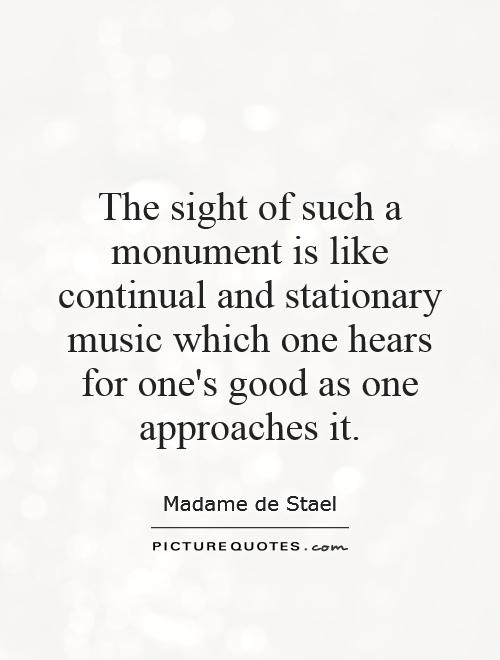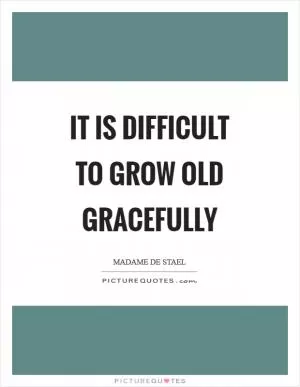The sight of such a monument is like continual and stationary music which one hears for one's good as one approaches it

The sight of such a monument is like continual and stationary music which one hears for one's good as one approaches it
Madame de Stael, a prominent figure in French literature and politics during the 18th and 19th centuries, was known for her keen observations and insights into the human experience. In her writings, she often explored the intersection of art, culture, and society, and the impact that monuments and landmarks have on individuals.In the quote, "The sight of such a monument is like continual and stationary music which one hears for one's good as one approaches it," Madame de Stael captures the essence of how a monument can evoke a sense of awe, inspiration, and wonder in those who encounter it. Just as music has the power to move us emotionally and spiritually, so too can a monument leave a lasting impression on our hearts and minds.
When one approaches a monument, whether it be a grand statue, a majestic building, or a historic landmark, there is a sense of anticipation and reverence that builds within us. The sheer magnitude and beauty of the monument can stir our souls and awaken a sense of wonder and admiration. It is as if the monument itself is a living, breathing entity, speaking to us through its silent presence and commanding our attention and respect.
Madame de Stael suggests that the experience of encountering such a monument is akin to listening to music that uplifts and inspires us. Just as music has the power to transport us to another realm and evoke a range of emotions, so too can a monument transport us to a different time and place, connecting us to the past and reminding us of the enduring power of human creativity and ingenuity.












 Friendship Quotes
Friendship Quotes Love Quotes
Love Quotes Life Quotes
Life Quotes Funny Quotes
Funny Quotes Motivational Quotes
Motivational Quotes Inspirational Quotes
Inspirational Quotes